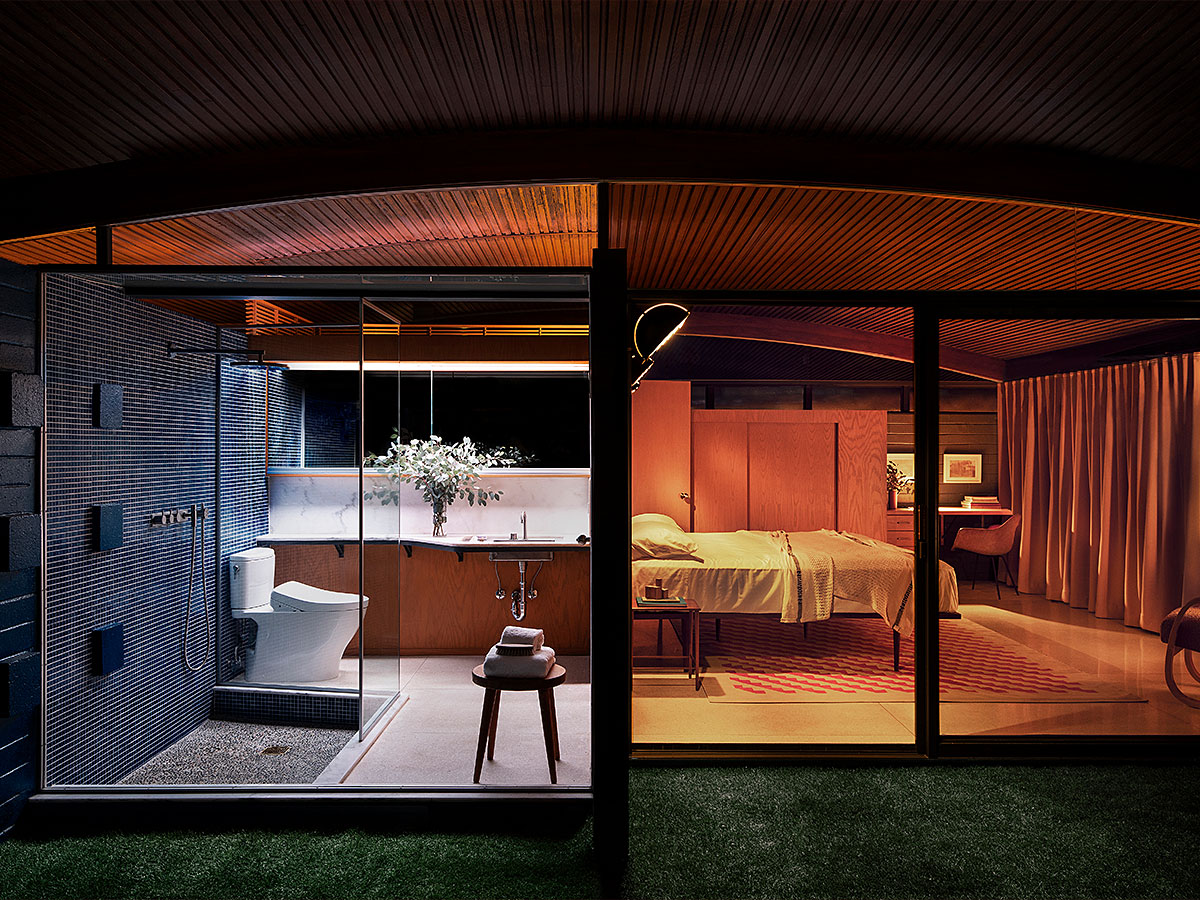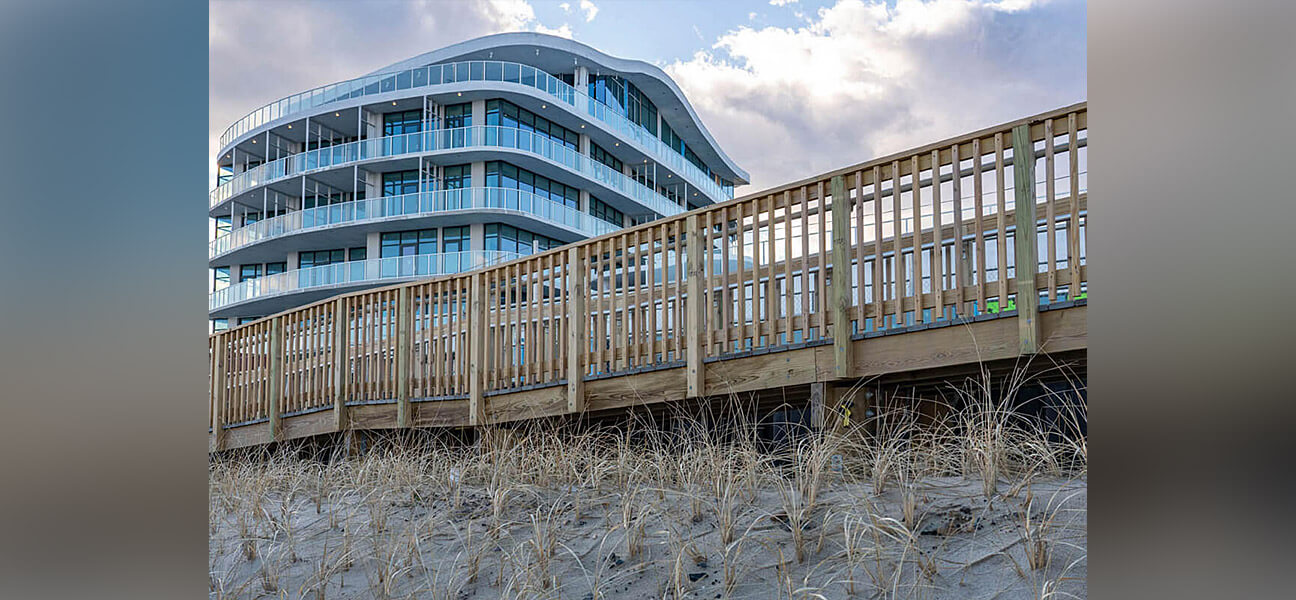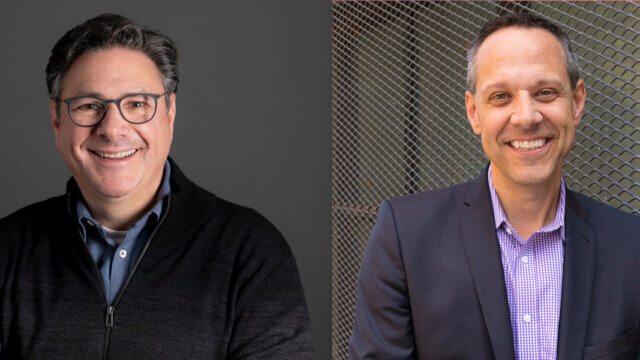When Stayner Architects purchased The Wave House in Palm Desert, CA—a historic home originally designed by Walter S. White and known for its distinctive “wave” roof—to restore it and turn it into a one-of-a-kind boutique hotel, they wanted to make sure they stayed true to the designer’s original intent.
“We approached the restoration of the Wave House with a fidelity to the design intent and details of the original architect, Walter S. White,” said Christian Stayner, principal, Stayner Architects. “This was only possible really because of advances in technology since the house was originally constructed in the 1950s. White was really ahead of his time in many ways—as much an inventor as he was an architect. However, over the years many of those inventions failed because the technology, or the fabrication availability or the mechanics weren’t yet ready at the time. This is in part why the house was altered and degraded, many of these were changes made by occupants to address various shortcomings of the design or failures of detailing that led to decay.”
 Stayner said that one of the most important aspects was the technology around lighting. He turned to lighting manufacturer Ketra. “We utilized Ketra’s products on this project because they fit the bill perfectly. As part of the restoration efforts, we wanted to replicate the color temperatures of the various lighting technologies available in the 1950s. White used what was available at the time, but in really innovative ways: tungsten filament bulbs and fluorescent lights that were hidden in structural members, embedded into pockets in the foundation, cantilevered off of walls, and so on.”
Stayner said that one of the most important aspects was the technology around lighting. He turned to lighting manufacturer Ketra. “We utilized Ketra’s products on this project because they fit the bill perfectly. As part of the restoration efforts, we wanted to replicate the color temperatures of the various lighting technologies available in the 1950s. White used what was available at the time, but in really innovative ways: tungsten filament bulbs and fluorescent lights that were hidden in structural members, embedded into pockets in the foundation, cantilevered off of walls, and so on.”
He said that the lighting helped bring the restoration to life. “One of the critiques we have of much historic preservation is how there’s such a fetish in restoring the look, but not the feel. For some reason the effect of the light quality is not considered. There’s great scrutiny over the size of the screw heads and their historical accuracy, yet it’s somehow acceptable to put a 4000 Kelvin CFL in a period fixture. Or to light up an 18th century monument at night with colored flood lights.”
Although it was important to preserve the original look and feel of the space, Stayner felt it was important to add one modern sensibility to the work. “We also wanted to be environmentally responsible for our energy use, even though the historic status of the building meant we weren’t subject to energy codes. Back in 1955 (or even 10 years ago), no one would have batted an eye for using 60- or 100-watt bulbs everywhere. Now, thanks in part to LED solutions like Ketra, the entire house uses less energy than a single bulb would have in the 1950s.”
The addition of the sustainable lighting isn’t to say that White’s original design didn’t allow for sustainable elements. The structure features underground ducts that “pre-cool” the air, and the cantilever of the roof was built to align with the movement of the sun. In summer, the sun is kept out of the house, and in the winter, with the sun lower, the roof line allows the house to capture the sun’s light and heat up the floors.
The new lighting technology also helped with wiring issues. “At the same time, working with an existing building, we had to use existing underground conduit that didn’t allow for changes in circuiting and wiring,” he said. “The wireless protocol means that we can control the lighting without old-fashioned wiring. The Ketra system was great for this and has provided us the ability to refine the lighting levels and color temperature at an individual bulb level throughout the house. This is great because we were interested in the ability to produce darkness, which was an experience in the 1950s, especially in the California desert where the house is located. Now there is all sorts of light pollution at night and we live in a world where universal illumination is the norm/goal.”
The building’s namesake roof also made for a lighting problem. “The house is unique, bizarre and specific in many ways, the roof being the most notable,” said Stayner. “Most residential lighting and electrical wiring lives in the ceiling cavity, pointing down. That’s not possible here, both because the roof/ceiling is four inches of solid wood, but also because the ceiling shape is so important.”
The fixtures used in the house were a variety of vintage fixtures from the 1930s through the 1950s, mostly sourced from Scandinavia and largely from designers who were contemporaries of White’s and also working with new industrial fabrication techniques. “We used the omni-directional Ketra A20 lamps to retrofit these fixtures, both inside and outside,” he said.




